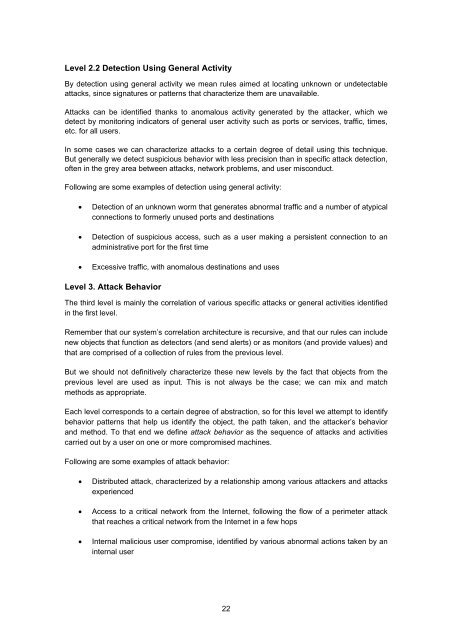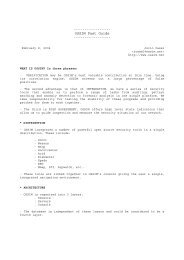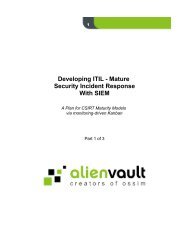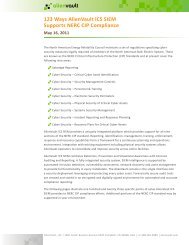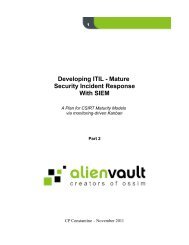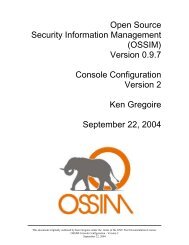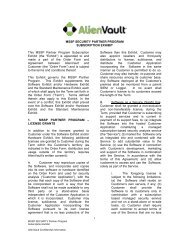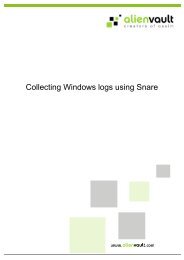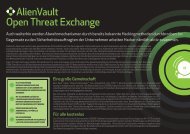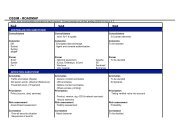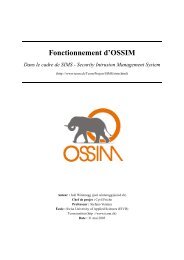ossim - AlienVault
ossim - AlienVault
ossim - AlienVault
You also want an ePaper? Increase the reach of your titles
YUMPU automatically turns print PDFs into web optimized ePapers that Google loves.
Level 2.2 Detection Using General Activity<br />
By detection using general activity we mean rules aimed at locating unknown or undetectable<br />
attacks, since signatures or patterns that characterize them are unavailable.<br />
Attacks can be identified thanks to anomalous activity generated by the attacker, which we<br />
detect by monitoring indicators of general user activity such as ports or services, traffic, times,<br />
etc. for all users.<br />
In some cases we can characterize attacks to a certain degree of detail using this technique.<br />
But generally we detect suspicious behavior with less precision than in specific attack detection,<br />
often in the grey area between attacks, network problems, and user misconduct.<br />
Following are some examples of detection using general activity:<br />
• Detection of an unknown worm that generates abnormal traffic and a number of atypical<br />
connections to formerly unused ports and destinations<br />
• Detection of suspicious access, such as a user making a persistent connection to an<br />
administrative port for the first time<br />
• Excessive traffic, with anomalous destinations and uses<br />
Level 3. Attack Behavior<br />
The third level is mainly the correlation of various specific attacks or general activities identified<br />
in the first level.<br />
Remember that our system’s correlation architecture is recursive, and that our rules can include<br />
new objects that function as detectors (and send alerts) or as monitors (and provide values) and<br />
that are comprised of a collection of rules from the previous level.<br />
But we should not definitively characterize these new levels by the fact that objects from the<br />
previous level are used as input. This is not always be the case; we can mix and match<br />
methods as appropriate.<br />
Each level corresponds to a certain degree of abstraction, so for this level we attempt to identify<br />
behavior patterns that help us identify the object, the path taken, and the attacker’s behavior<br />
and method. To that end we define attack behavior as the sequence of attacks and activities<br />
carried out by a user on one or more compromised machines.<br />
Following are some examples of attack behavior:<br />
• Distributed attack, characterized by a relationship among various attackers and attacks<br />
experienced<br />
• Access to a critical network from the Internet, following the flow of a perimeter attack<br />
that reaches a critical network from the Internet in a few hops<br />
• Internal malicious user compromise, identified by various abnormal actions taken by an<br />
internal user<br />
22


